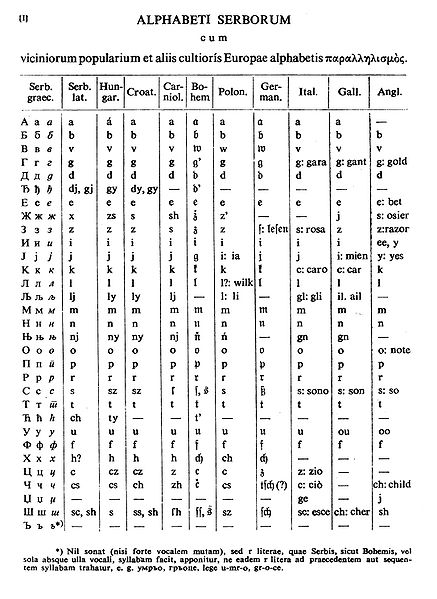Anti-Cyrillic protests in Croatia
The Anti-Cyrillic protests in Croatia were a series of serbophobic protests in late 2013 against the application of bilingualism in Vukovar, whereby Serbian and the Serbian Cyrillic alphabet were assigned co-official status due to the local minority population. The implementation of this decision became mandatory after the 2011 Croatian census, according to which Serbs in Vukovar comprise more than one-third (34.8%) of Vukovar's total population. Signs in the Serbian Cyrillic alphabet had been put up as the Constitutional Act on the Rights of National Minorities mandates bilingual signs in any area where more than one-third of the population belongs to an ethnic minority. This decision became subject of intense agitation by, among others, Croatian war veterans and many ordinary citizens who believe that due to events, particularly the Battle of Vukovar, the city should have been excluded from the application of the law on minority rights, although protests and vandalism have occurred in other towns and cities. The Serbs of Croatia are a minority group that have the narrowest usage of right to bilingualism among all national minorities in Croatia.

Anti-Cyrillic protests in Croatia
Anti-Cyrillic Graffiti ("Vukovar and not Bykobap [sic]!") depicting the U symbol of the Ustashe
Broken bilingual sign of the Elementary School Nikola Tesla in Mirkovci
Serbian Cyrillic alphabet
The Serbian Cyrillic alphabet is a variation of the Cyrillic script used to write the Serbian language, updated in 1818 by the Serbian philologist and linguist Vuk Karadžić. It is one of the two alphabets used to write modern standard Serbian, the other being Gaj's Latin alphabet.
Serbian Cyrillic, from Comparative orthography of European languages. Source: Vuk Stefanović Karadžić "Srpske narodne pjesme" (Serbian folk poems), Vienna, 1841
Vuk Karadžić.
Vuk's dictionary


![Anti-Cyrillic Graffiti ("Vukovar and not Bykobap [sic]!") depicting the U symbol of the Ustashe](https://upload.wikimedia.org/wikipedia/commons/thumb/a/a5/20130609_Zagreb_041.jpg/640px-20130609_Zagreb_041.jpg)



